
Source: Thinkstock
Marc Andreessen, a tech innovator behind a number of ventures himself, wrote some years ago for CNET on the topic of the serial entrepreneurs of Silicon Valley. Asked why some entrepreneurs keep going and start company after company, despite the financial stability afforded by one initial success, he wrote that tech innovators are “all over the map” when it comes to personality and motivation. Some love technology. Some are in it for the money. Others just love founding and developing companies.
There are more serial entrepreneurs than ever before because there is a higher number of entrepreneurs in general, and because many new companies develop faster than they did in the past. Many today are founded, scaled up, and sold within a few years — a key factor in enabling successful entrepreneurs to “try it again” without committing the next 10, 20, or 30 years to a business.
While there’s some argument over a phenomenon that plagues many Silicon valley serial entrepreneurs — that some have trouble matching the blockbuster success of their first venture — many successfully reinvent themselves over the course of a few years or over the period of an entire career to continue developing their ideas and building new companies. Read on to learn about 12 well-known innovators who have reinvented themselves to found the tech companies behind some of Silicon Valley’s most iconic products.
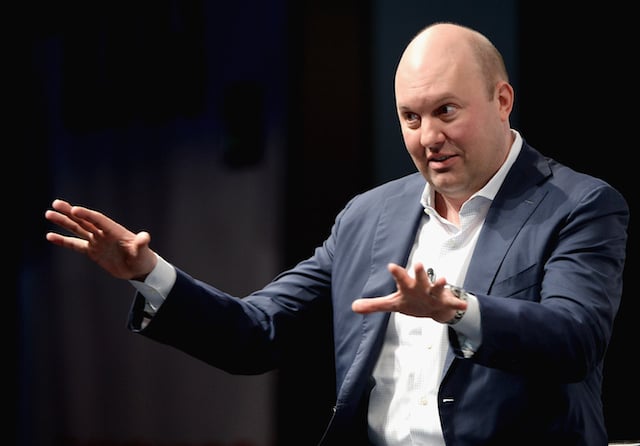
Source: Michael Kovac/Getty Images for Vanity Fair
1. Marc Andreessen
Marc Andreessen is best known for creating the Netscape web browser and for inventing the concept of the graphical web browser. According to Biography, Andreessen started by creating a graphical web browser called Mosaic, which enabled users to navigate through the web with pictures and mouse clicks. He and his team gave Mosaic away for free, and the subsequent user base of two million people caught the attention of James Clark, founder of Silicon Graphics.
Together, Clark and Andreessen launched an Internet company called Mosaic, and subsequently changed the name to Netscape, creating a new web browser of the same name. Netscape went public in 1995 and was acquired by AOL in 1999. According to his LinkedIn page, Andreessen co-founded LoudCloud in 1999. It became Opsware in 2002, and he co-founded Ning in 2004, and venture capital firm Andreessen Horowitz in 2009.
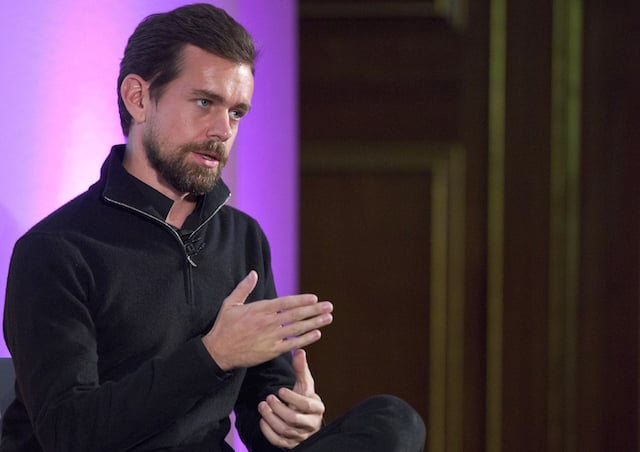
Source: Justin Tallis/AFP/Getty Images
2. Jack Dorsey
Jack Dorsey dropped out of college and co-founded Twitter with Evan Williams, Biz Stone, and Noah Glass in 2006, according to Forbes. In 2005, he had admired Williams, who had recently sold Blogger to Google and whom The New York Times characterized as a “minor celebrity” on the San Francisco tech scene at the time. Williams was using some of the money he gained from the acquisition of Blogger to fund a new company, Odeo, which made podcasts. Dorsey joined the company as an engineer, and along with Glass developed the idea that would become Twitter, as the company was searching for a new direction after Apple announced that it would add podcasts to iTunes.
After pitching it to Williams and Biz Stone, an Odeo colleague, the company began work on the project. Dorsey was stripped of his power as Twitter’s chief executive after infrastructure issues plagued the site to become the company’s chairman. He subsequently founded Square, a mobile payments company that enables anyone with a smartphone to process credit card payments.

Source: Justin Sullivan/Getty Images
3. Steve Jobs
Perhaps one of the tech world’s most notable serial entrepreneurs, Steve Jobs is most famous for co-founding Apple. According to the Computer History Museum, in 1974, Jobs began working as a technician at the gaming company Atari and in 1975 began attending the meetings of the Homebrew Computer Club, which assembled to explore the potential of the microcomputer. Jobs’s close friend Steve Wozniak designed the Apple-1 computer to show off to the club. Jobs realized that there was an audience for the machine beyond the members of the club. He began thinking about a new computer that anyone could afford and use, and along with Wozniak and retired electrical engineer Mike Markkula, co-founded Apple Computer in 1977. The Apple II was Apple’s first mass-produced product and met with huge success. The 1984 Macintosh introduced the graphical user interface, but sales were modest.
Jobs was ousted from Apple, and in 1986 bought the computer graphics division of Lucasfilm, which he renamed Pixar. Jobs shifted the company’s focus to the production of short film sequences and commercials, and Pixar eventually produced Toy Story, released in 1995. Jobs sold Pixar to Disney in 2006. While at Pixar, Jobs also founded NeXT, which built UNIX workstations for the educational and scientific market. The machines were introduced in 1990 and established the object-oriented operating system with NeXTStep. In 1996, Apple bought NeXT, and Jobs returned to Apple. He focused the company on a desktop and laptop computer, introducing the iMac in 1998. In 2001, Apple introduced OS X and the iPod. The iTunes store and music management system followed in 2003, the iPhone in 2007, and the App Store in 2008. Jobs’s last major product launch was the iPad in 2010.
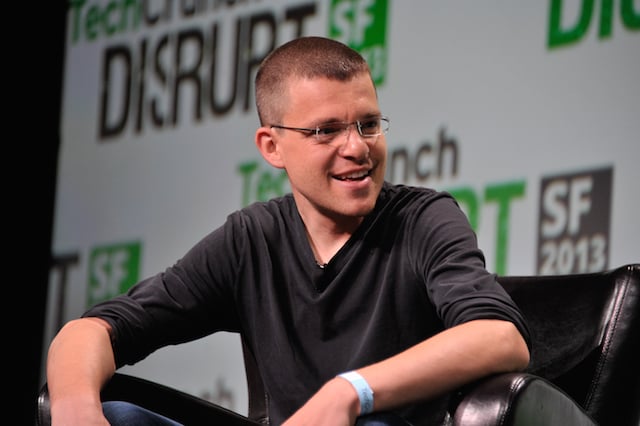
Source: Steve Jennings/Getty Images for TechCrunch
4. Max Levchin
Max Levchin was one of the co-founders of PayPal, where he developed breakthrough antifraud technology and served as chief technology officer until its acquisition by eBay in 2002. In 2004, he helped launch Yelp, and in the same year founded the social gaming company Slide, which was acquired by Google in 2010 and subsequently shut down.
According to his website, his two major projects currently are Affirm, a company he co-founded to change the way people borrow money and “remake consumer finance from the ground up,” and Glow, a company that aims to use the ability to analyze vast amounts of data to empower women and couples to take control of their reproductive health. Affirm was launched in 2012 and Glow in 2013, and both are a part of Levchin’s “data-as-commodity” project HVF. Fast Company recently characterized Levchin as a man still in search of “a grand second act,” leveraging big data and smart design to get there.

Source: Kevork Djansezian/Getty Images
5. Elon Musk
Notable members of the PayPal team of which Levchin was a part include Peter Thiel, Jeremy Stoppelman, Reid Hoffman, David Sacks, Keith Rabois, Jawed Karim, and Russell Simmons. But one of the most well-known is Elon Musk. According to CrunchBase, Musk founded software company Zip2 in 1995, providing online content publishing software for news organizations. The company was acquired by Compaq’s AltaVista division in 1999, and later the same year, Musk co-founded X.com, a financial services and email payments company.
X.com acquired Confinity a year later, and the resulting combined company focused on email payments via the PayPal domain. In 2002, PayPal was acquired by eBay, and Musk founded SpaceX, which develops rockets and spacecrafts. He served as chief engineer for the Falcon 1, Falcon 9, and Dragon spacecraft. Musk is also the owner and chairman of Tesla Motors, which builds high-end electric vehicles, and the chairman of the board of SolarCity, which offers photovoltaics products and services.
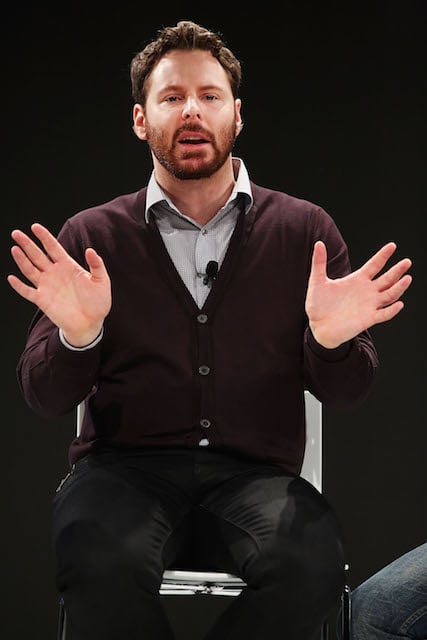
Source: Spencer Platt/Getty Images
6. Sean Parker
Sean Parker began his career in tech as a computer hacker in his teenage years. According to Biography, when he was 15, his hacking drew the attention of the FBI, and he had to complete community service at the local library with other teenage offenders. About this time, he met Shawn Fanning, who was also 15 and a hacker. They launched the largely unsuccessful Internet security company Crosswalk, which aimed to help firms stop hacker attacks. A few years later, Parker put off college and together, they founded file-sharing service Napster in 1999. The service drew tens of millions of users, but Parker was forced out and the company was eventually order to shut down its service.
With new partners, he co-founded Plaxo, a service that kept users’ address books up-to-date, but was soon ousted by the other founders. Parker then discovered Facebook, met with founder Mark Zuckerberg, and became the social networking company’s founding president. While he exited from Facebook, he then worked to bring the Swedish platform Spotify to the United States and assisted with its integration with Facebook, reunited with Fanning to create a video site called Airtime, created a Facebook charity app called Causes, and for a time joined Founders Fund, Peter Thiel’s venture firm. According to Forbes, he established Brigade Media in 2014, a startup that will harness technology to enhance civic engagement.
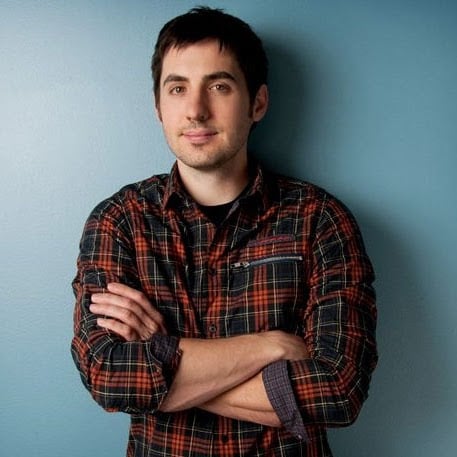
Source: Plus.google.com
7. Kevin Rose
After dropping out of college, Kevin Rose began coding and in 2004 launched Digg, the popular social news website. Within a few months, according to Biography, Digg was attracting a few thousand visitors per month. In less than a year, its monthly traffic had jumped to 200,000, and by 2009, it was one of the most heavily-trafficked websites in the country. But Rose grew bored with Digg and began working on side projects, like Pownce, a file-sharing application, WeFollow, a Twitter directory, and an angel investing career. Rose left Digg in 2011, and as Business Insider reported in 2012, Betaworks bought Digg for just $500,000, nowhere near the $60 million that News Corp had offered to pay — a result of Rose’s tendency toward “creating amazing products and then neglecting them.”
A month after leaving Digg, Rose unveiled app incubator Milk, which was intended to craft a startup situation in which he would never be bored. It later shut down its only product when Google hired Rose and the rest of the Milk team. Re/code reported last year that he stepped down from some of his duties as a venture partner at Google Ventures to start a new company called North Technologies. The app incubator launched Tiiny, an ephemeral video sharing app, and Watchville, a “luxury good” app that offers news and tools for timepiece enthusiasts. At the end of last year, he told Re/code that the incubator is also working on an app in the cryptocurrency space and a management tool to complement popular workplace communication app Slack. PC Mag recently reported that North Technologies was pulling the plug on Tiiny but will continue to focus on Watchville, and then launch a new project “once we find something that passes our bar for new apps.”
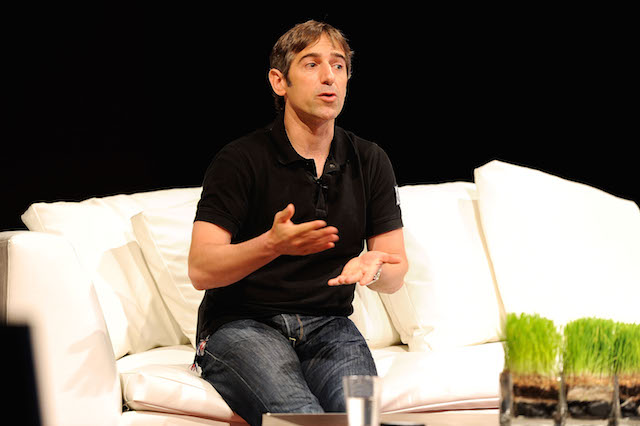
Source: Larry Busacca/Getty Images
8. Mark Pincus
Mark Pincus is most well-known for founding online gaming company Zynga, but created many other companies on his way there. According to his blog, in 1995, Pincus launched his first startup, FreeLoader, the first web-based consumer push technology company, which was acquired seven months later by Individual, Inc. In 1997, he founded his second company, Support.com, which became a leader in the area of service and support automation software. Then in 2003, he launched Tribe.net, one of the first social networks. Its core technology assets were acquired by Cisco in 2007, the same year that Pincus launched social gaming company Zynga.
Zynga develops games integrated with social networks like Facebook, as well as for Android and iOS devices, and created a network of third-party developers. It went public at the end of 2011 at a $7 billion valuation, significantly lower than had been expected. Re/code reported last year that Pincus stepped down from all operational roles at Zynga after a rocky tenure with the company. Among his mistakes, he counted growing the company too quickly — to 4,000 employees in just four years — but noted that Zynga was one of the first app-focused companies and one of the first to use immense amounts of data to determine what users wanted. Late last year, Pincus revealed that his next project is a type of incubator, according to Re/code, called Superlabs.

Source: Tristan Fewings/Getty Images
9. Peter Thiel
In 1998, Peter Thiel co-founded PayPal with Max Levchin, and the company later merged with X.com, which was headed by Elon Musk. According to CrunchBase, when eBay acquired PayPal in 2002, Thiel founded a global macro fund called Clarium. In 2004, he founded Palantir Technologies, which offers platforms for finance companies and intelligence, defense, and law enforcement communities to analyze the world’s information. Also in 2004, he made the first outside investment in Facebook.
Based on his success as a venture capital investor, Thiel co-founded Founders Fund, a venture capital fund through which he has invested in technology companies like SpaceX, LinkedIn, Yelp, RoboteX, and Spotify. In 2012, Thiel established Mithril Capital Management, a technology investment fund. He also established the Thiel Foundation and sponsors the Committee to Protect Journalists, The Seasteading Institute, and the Human Rights Foundation. Thiel also founded the 20 Under 20 Thiel Fellowship, and created Breakout Labs to help independent scientists, engineers, and inventors advance their ideas.
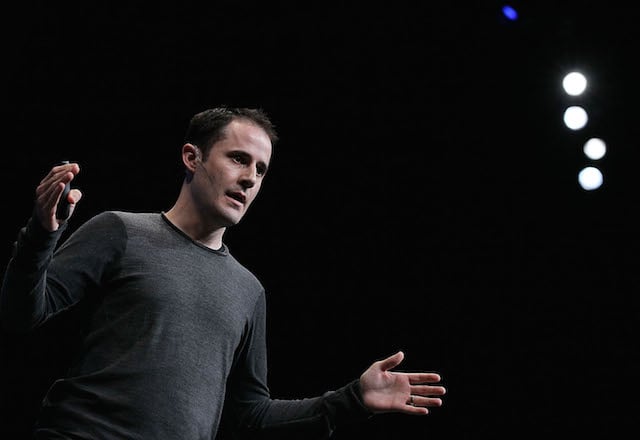
Source: Justin Sullivan/Getty Images
10. Ev Williams
Ev Williams is best known as one of the co-founders of Twitter, the social network used by millions worldwide. According to Biography, he left college to pursue a career based in information systems, and not long after was coding and freelancing for Hewlett-Packard and Intel. With Meg Hourihan, he co-founded Pyra Labs and its spinoff, Blogger, an early tool for creating and managing the abbreviated form of writing for the web that came to be known as blogging. In 2004, Williams founded the podcast company Odeo, and in 2006 co-founded the Obvious Corporation with Biz Stone, Jack Dorsey, and Noah Glass.
The Obvious Corporation gave rise to the creation of Twitter, which quickly grew to 500 million registered users who sent about 340 million tweets daily in 2012. Williams provided much of the company’s early financing, and in 2008 replaced Dorsey as chief executive. In 2012, Williams and Stone launched a new publishing platform called Medium, and in 2013, Twitter went public.
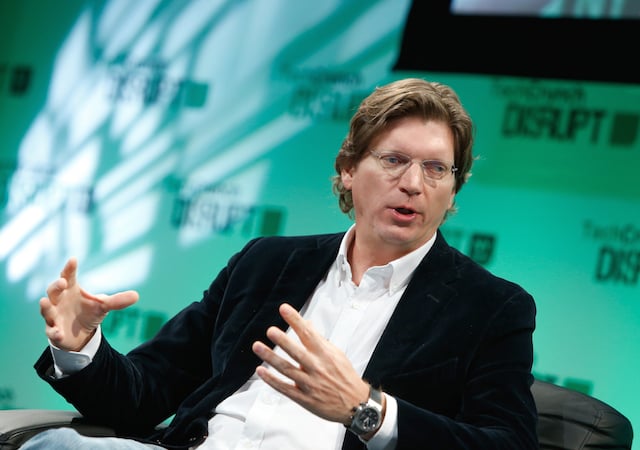
Source: Brian Ach/Getty Images
11. Niklas Zennström and 12. Janus Friis
Janus Friis and Niklas Zennström first worked together at Tele2 in the 1990s, according to Business Insider. They then unveiled file-sharing site Kazaa in 2001, and launched Internet calling company Skype in 2003, using the same backend that was developed for Kazaa. They sold Skype to eBay in 2005, and co-founded Atomico in 2006. They struggled with eBay when the company tried to sell Skype to a group of private investors, and worked their way into the deal with a legal settlement. They profited again when Microsoft bought Skype in 2011, and founded and sold a video streaming service named Joost.
Shortly after they raised a second round of funding in 2010, Atomico stopped describing itself as a venture fund co-founded by Zennström and Friis, and started attributing sole credit to Zennström. A 2010 article about the funding of music subscription service Rdio mentioned Zennström, Friis, and Atomico separately as investors, indicating that the partnership had dissolved. In their subsequent ventures, both have hired early Skype employees.
More From Tech Cheat Sheet:
- Cheap Smartphones Are Coming, and Microsoft Is Prepared
- Google’s New Campus Will Challenge Apple in One Major Way
- How Apple Is Reinventing iPhoto With the New Mac Photos App
Want more great content like this? Sign up here to receive the best of Cheat Sheet delivered daily. No spam; just tailored content straight to your inbox.
Read the original article from The Cheat Sheet